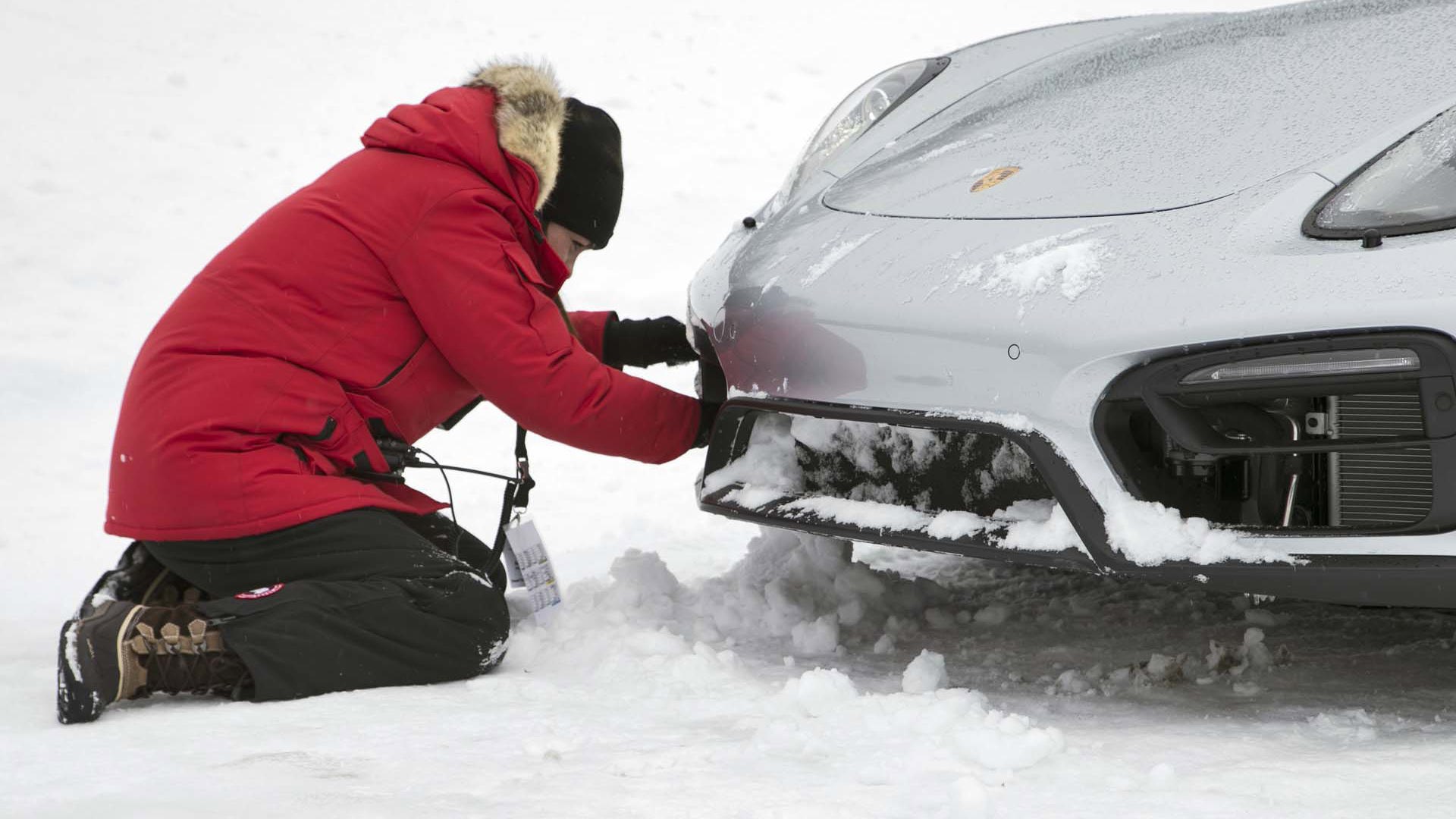You know how it sucks to wake up and do things and get moving when it’s cold and miserable outside? Well, fellow Canucks, our rides are no more excited to snap into action on a cold morning than we are. Partly that’s because our rides don’t get a warm bed and a cozy blanket between which to spend the cold winter nights. Instead, we leave our rides, unattended, uncovered, and fully exposed to the cold and the wind and the frost and the ice, in our driveways and side streets.
We live in a harsh climate; and one that poses a unique set of challenges for a car engine trying to fire up after being frozen through at 30 below. For an engine to get fired up at these sort of temperatures, success is all about precision.
Honda’s Hayato Mori comments, “Even before start up, the car knows air temperature, pressure and flow, as well as engine temperature, speed and location of the engine within its cycle. This allows the injectors to spray a fine fuel mist in precise amounts, at the perfect time, to maximize the likelihood of combustion.
“And, thankfully, most of things that make for a modern, efficient engine (like low friction, precise measurement and good fuel control), also make for an easier cold start.”
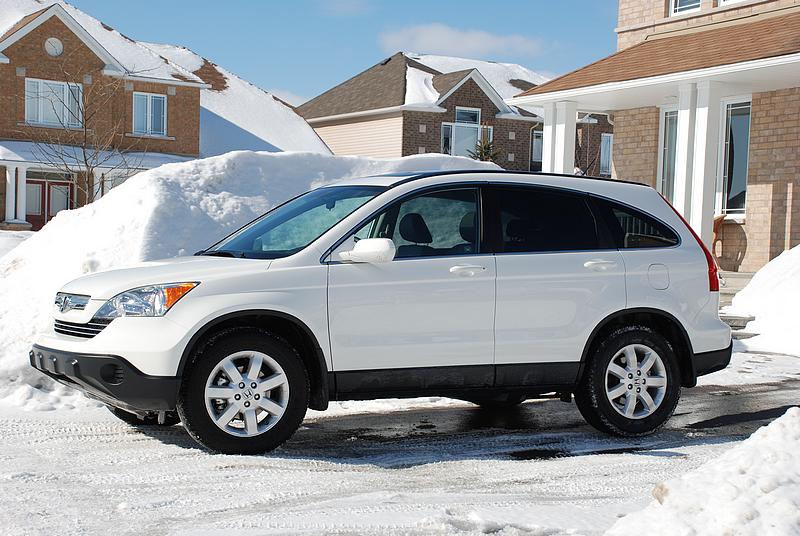
Like other automakers, Honda says they don’t have a minimum temperature at which a car needs to start without being assisted by something like a block heater. “We sell cars in Russia, Northern Europe and all over Canada. The customer expectation is the same globally: ‘It has to start.’ This is our target,” says Mori.
Still, regardless of your ride’s age, even all of the modern engineering technology in the world sometimes isn’t enough to achieve ignition on an extremely cold morning. Or maybe, you don’t have access to the latest in modern engineering with a new car, or access to a block heater plug. One friend, who owns an older Mazda, recently texted me in a panic for this very reason.
“We are moving into our new apartment this week. It’s supposed to be 25 below. We park outside, and there’s no access to a plug. Can’t even run a really long extension cord. Nothing. What can we do? I don’t think the car is going to start.”
With this dire text message as a reference point, here’s a look at a few tips and pointers to bear in mind this winter, to help maximize the odds that your ride will start, each and every time you ask it to – and whether or not it’s plugged in.
A Tuned-Up Engine and Synthetic Oil

Whether you use a block heater or not, keeping your engine properly tuned and maintained can work wonders for cold weather startup success. Clean fuel injectors, fresh spark plugs and ignition system components, and a fresh change of oil, possibly using synthetic (even if just for winter), can all assist your engine in achieving ignition in extreme cold.
Fresh synthetic oil makes it easier for your starter to turn the engine over, and clean fuel injectors and a good spark make it more likely that the engine will achieve that all-important initial ignition of fuel quickly in the cold.
Translation? Use some fuel-injector cleaner, confirm that your spark plugs aren’t overdue for a change, and switch to synthetic oil, if feasible, when the mercury drops. These three tasks can all help massively with cold engine start-up.
A Healthy Battery
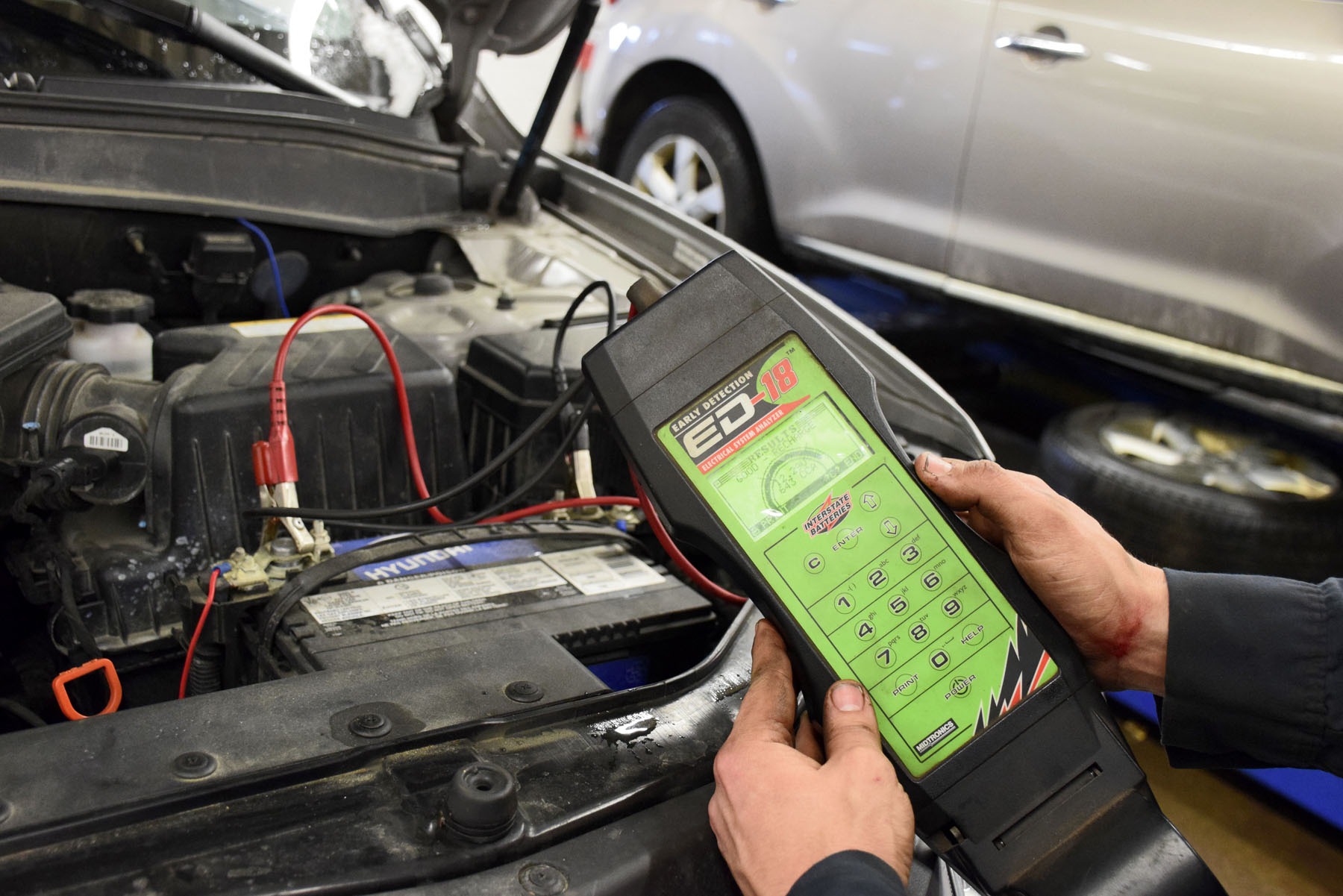
If your battery is old, in less-than-stellar shape, or has been having trouble starting your engine all year, the cold weather may wind up causing issues. Especially when a block heater isn’t an option for an older car, a fresh battery is arguably the best defense against failure to start in extreme cold.
Mechanic Nick Labrie comments, “If I had no access to a cord for a block heater, and I could do just one single thing for my vehicle to help it start in the cold, it would be to install a really good, high-quality battery. You’ll never go wrong in the winter with a healthy, high-quality battery. Add a synthetic oil fill, and you help your ride even more.”
A Booster Pack
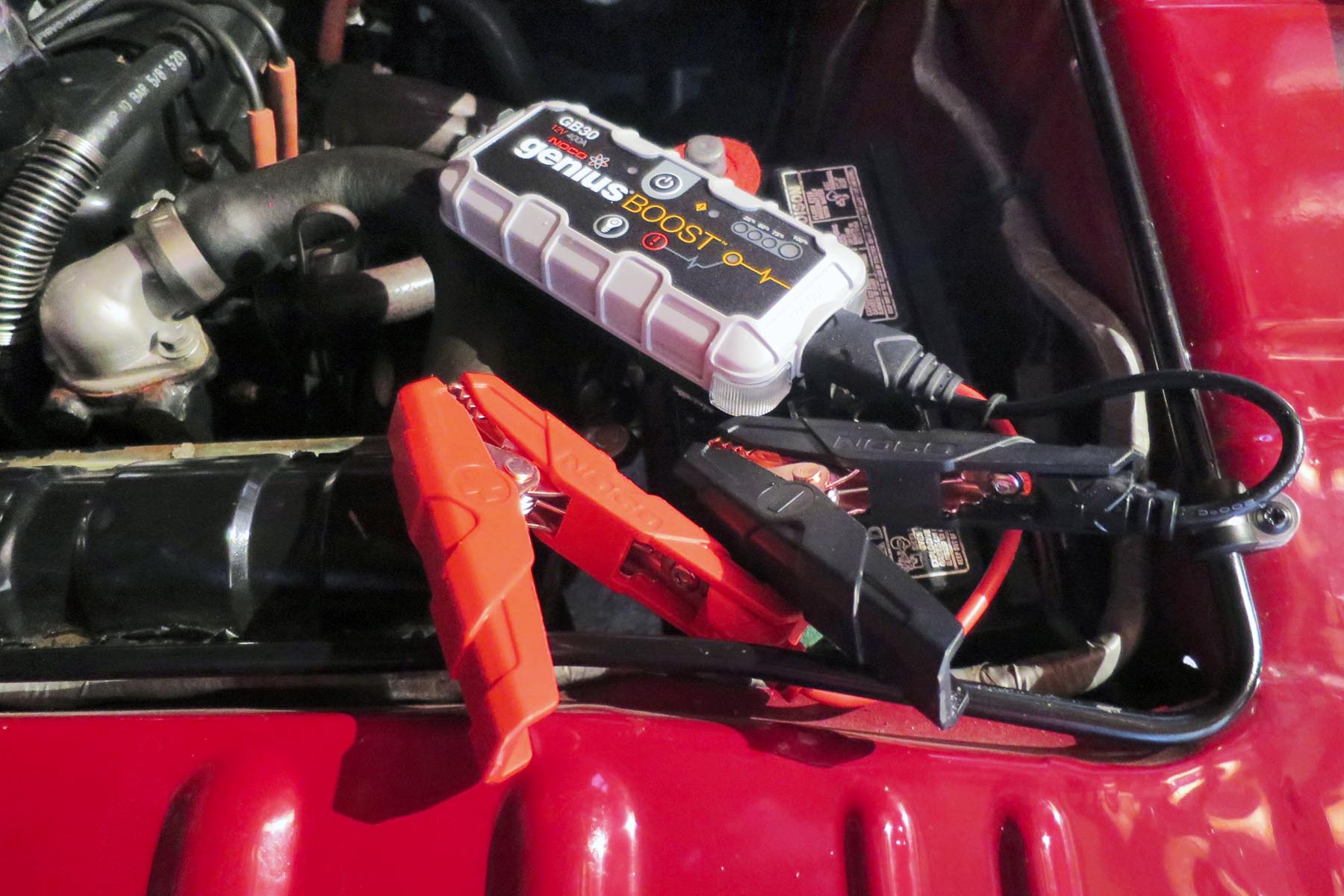
Consider purchasing a booster pack, like the NOCO GeniusBoost or Cyntur Jumper Pack Mini. You charge these devices up at home and bring them with you, since they’re portable and no bigger than a small shoe. If your engine won’t start on its own, perhaps because your battery is weak, the extra boost of power from a fully charged booster pack may be all that’s needed to get it fired up. Keep this booster pack inside wherever possible, but bring it with you in the car. A fully charged booster pack can restart a car several times.
How about a battery-powered engine warmer? Wouldn’t a battery-powered block heater be grand? Perhaps in the form of a battery pack that can be left under the vehicle to power the heater in the absence of a cord?
Maybe so, but the problem is that they don’t exist, since generating even a little heat takes a tremendous amount of power – and a block heater has to generate a tremendous amount of heat, for a relatively long time, in order to do its job. Simply, there isn’t a battery small or affordable enough to power a block heater for the length of time it requires to warm your engine. Short of plugging your block heater into a gasoline generator, you’re going to need a wall outlet.
Block Heater Alternatives

Maybe you’ve got access to a plug, but your ride has no block heater. In many vehicles, installation of a block heater is a possibility, even later in the vehicle’s life – though other options exist to help keep your ride’s engine warm while it sits overnight.
Glue-on oil-pan heaters, like the Wolverine heater, use a thin heating pad, powered by an electrical outlet, that’s stuck to the vehicle oil pan with a heavy-duty adhesive. This type of heater heats the engine oil directly, instead of the engine coolant, like a block heater. It may more directly assist with cold engine start-up, by ensuring that the engine oil supply is thin and warm when drivers fire up the vehicle. I’ve run a Wolverine heater on my Subaru for three years with no issue, having initially chose it because it was less expensive to install than a block heater.
Labrie is a fan of this style of heater, too. “I use these on my cars,” he says. “I like that they heat the engine oil directly, and they get really, really good and hot. Block heaters just warm the coolant, but the glue-on pans get the oil piping hot, and they do it quickly, too, so you don’t necessarily have to leave them on all night.”
Also available are in-line coolant heaters, which are installed within the vehicle’s coolant hose. Though relatively rare nowadays, this is an option to heat engine coolant, when a block heater is not.
Battery warmers are also available, acting as a sort of thermal blanket to keep your battery closer to its ideal temperature. “I’m not as huge a fan of these,” Labrie says, “but I do have lots of customers who run them, along with a block heater or oil-pan heater. If you have a healthy, quality battery, you shouldn’t need one – but many drivers do, for that little bit of extra help on cold mornings.
Smart Energy Use
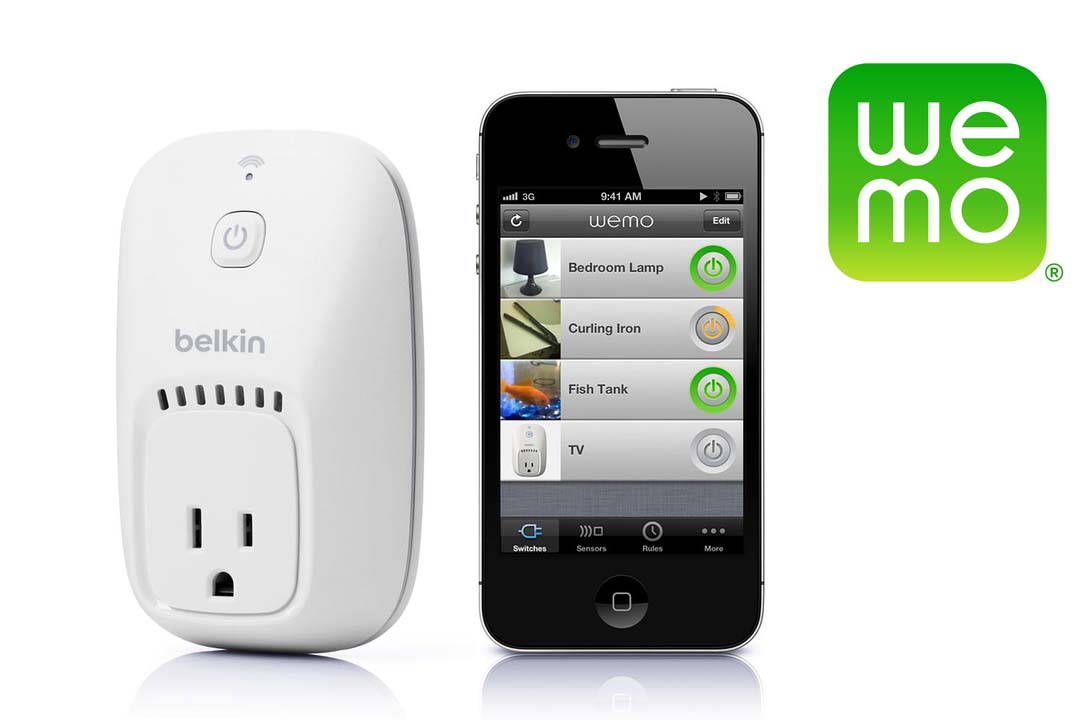
If you do have an outlet to power your block heater, battery warmer, in-line heater or oil-pan heater, consider reducing your energy consumption when it comes time to pre-heat your ride. Options are available for block heater timers, which turn the heater on, perhaps, two hours before you set off for work, instead of running it all night. Others detect the outside temperature, and only turn the heater on below a certain limit.
Or, consider using a WeMo smart switch, which is Wi-Fi connected and can be programmed to activate only at a certain time on certain days, or when the weather forecast shows low temperatures. Best of all, with a WeMo switch, you can remotely turn your block heater on and off from your smartphone.
Two caveats though: first, be sure the switch won’t be overloaded by the draw from the heater you’re using. And second, since WeMo currently doesn’t make an outdoor smart switch, you’ll have to plug it in inside, and route an extension cord out to your car.
Cord and Plug Maintenance
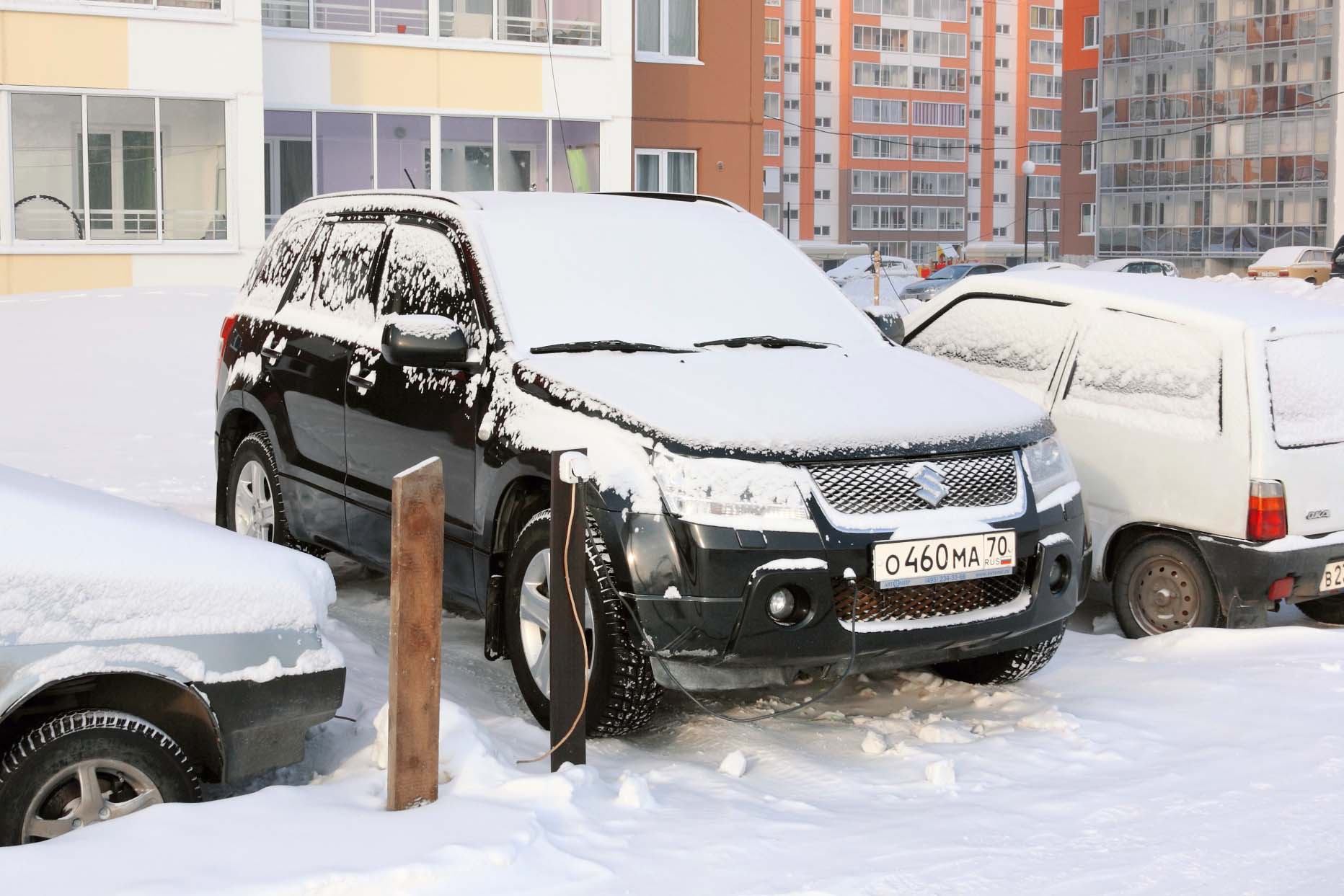
Don’t forget to maintain that heater cord, too. Every year, fires are caused by damaged or corroded block heater cords that short out, overheat, or otherwise ignite. Inspect your heater cord weekly, noting that any splitting or cracking of the insulation, or any corrosion on the plug blades, can be taken as a trouble sign. Note that corroded plug blades can melt and scorch power outlets, or even start a fire, so protect the plug-end when it’s not in use with a cap, or the end of an old extension cord you’ve cut off.
